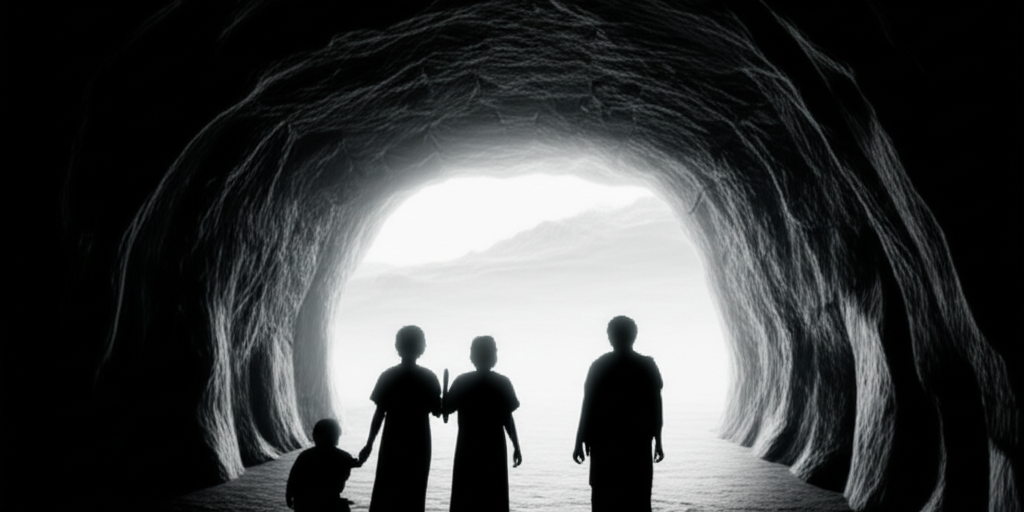Magical Thinking: Beliefs and Impacts

Magical Thinking: Beliefs and Impacts
Meta Description
Explore the fascinating world of magical thinking, from everyday superstitions to its psychological roots and surprising impacts on well-being and decision-making.
Introduction
Have you ever knocked on wood after saying something you don't want to jinx? Or worn a "lucky" shirt for an important event? If so, you've engaged in a form of magical thinking. Far from being confined to childhood fantasies or ancient rituals, magical thinking is a pervasive aspect of human cognition, influencing our beliefs and actions in subtle and not-so-subtle ways.
At its core, magical thinking is the belief that one's thoughts, words, emotions, or ritual behaviors can influence external events, even without a logical connection. This can manifest as believing your thoughts alone can bring about effects in the world, or that objects are causally connected if they resemble each other or have come into contact in the past. While often seen as irrational, magical thinking isn't always harmful and can even offer certain benefits. However, its impacts are varied and can range from providing comfort to causing significant distress and impeding rational decision-making.
In this blog post, we'll delve into the intriguing world of magical thinking, exploring its psychological underpinnings, common manifestations, and both the surprising advantages and potential drawbacks it holds for our lives.
What Exactly is Magical Thinking?
Magical thinking is a cognitive pattern where individuals believe their internal states (thoughts, feelings) or specific actions can directly affect external circumstances, even without any plausible physical link. It's a type of fallacious thinking that often involves attributing supernatural or irrational causes to events.
For example, a person might believe that wearing a specific shirt can influence the outcome of a baseball game, or that wishing for something intensely can make it come true. The "magic" lies in the absence of a logical, demonstrable connection between the thought/action and the perceived outcome.
Psychologist Jean Piaget, a pioneer in child development, believed that magical thinking was a hallmark of the preoperational stage of cognitive development in children (ages 2-7), where they develop language and abstract thought and engage in symbolic play. Children, in particular, may struggle to differentiate their internal world from the external, leading them to believe their thoughts or wishes can directly cause events. For instance, a child might think something bad happened to a family member because they were angry at them.
However, magical thinking isn't limited to childhood; it can persist into adulthood, albeit often in less overt forms. It's a common human tendency, often rooted in our brain's desire to find patterns and explanations for the world around us.
Common Manifestations of Magical Thinking
Magical thinking pops up in various aspects of our lives, from widespread cultural practices to individual quirks. Here are some common examples:
Superstitions
Superstitions are perhaps the most recognizable form of magical thinking. These are beliefs that specific behaviors can influence unrelated human events, often leading to good or bad luck.
- Lucky Charms and Objects: Carrying items like a rabbit's foot, a four-leaf clover, or a lucky coin, believing they bring good fortune.
- Rituals for Luck: Knocking on wood to prevent bad luck after a positive statement, crossing fingers for good fortune, or making a wish before blowing out birthday candles.
- Avoiding Bad Omens: Believing that walking under a ladder or breaking a mirror brings misfortune, or that a black cat crossing your path signals bad luck.
Rituals and Traditions
Many people perform rituals to gain a sense of control over life or to influence outcomes. While some rituals are purely cultural or religious, others have a magical thinking component.
- Pre-Performance Routines: Athletes performing specific routines before a game or competition, believing it will lead to success.
- Cultural Practices: Rain dances performed in some cultures, based on the belief that human movements can influence weather patterns.
- Daily Habits: Someone might have a routine like saying certain words or performing actions to prevent something undesirable from happening.
Thought-Action Fusion
This involves the belief that thoughts are equivalent to actions, and that merely thinking something can make it come true.
- Negative Outcomes: Worrying that having a negative thought about someone can cause them harm.
- Wishing for Outcomes: Believing that intensely wishing for a specific event can manifest it in reality.
Associations and Karma
This type of magical thinking links specific outcomes to a particular event, even if there's no logical correlation.
- Karma: The belief that "what goes around comes around," implying a direct magical link between good/bad deeds and future fortune.
- Coincidences as Omens: Interpreting coincidental events as signs or omens with special meaning.
While many of these examples are harmless and even common, the degree to which a person believes and acts upon them can vary, influencing the overall impact of magical thinking on their life.
The Surprising Benefits of Magical Thinking
Despite its often irrational nature, magical thinking isn't always a negative force. In fact, it can offer some surprising psychological benefits:
A Sense of Control
In unpredictable or stressful situations where an individual has little actual control, magical thinking can provide an illusory sense of agency and control. This can be particularly comforting when facing uncertainty, such as awaiting test results or dealing with difficult life circumstances. This feeling of control can help reduce anxiety.
Reducing Anxiety and Stress
Magical beliefs, especially superstitions, can act as a coping mechanism for stress and anxiety. By believing that a ritual or lucky charm can influence an outcome, individuals may feel less anxious, which can even improve performance in certain situations. For instance, an anxious person might engage in magical thoughts, believing that by worrying about every potential negative outcome, they are actively preventing them from happening.
Fostering Optimism and Confidence
The power of positive thinking, in a sense, falls under the umbrella of magical thinking. While not scientifically proven to cure physical ailments, an optimistic outlook fostered by magical beliefs can improve one's mood, help manage stress and depression more easily, and increase the ability to notice positive things in the environment. This increased confidence and optimism can even boost performance.
Community and Belonging
Sharing magical beliefs, such as team superstitions in sports, can create a sense of community and team bonding. Cultural or religious rituals rooted in magical thinking can also provide meaning and connection within a group.
Aiding in Grief
During times of grief, children may experience magical thinking, believing they are responsible for an event or capable of reversing it through their thoughts. This can be a way for them to cope with the inexplicable and process their emotions. For adults, mild forms of magical thinking, like feeling a lost loved one is present when seeing something that reminds them, can be comforting and harmless.
Sparking Creativity
In children, fantastical play and magical thinking are believed to promote creative divergent thinking. Studies have even shown that exposure to magical themes can increase performance on creative tasks in children.
While these benefits are often psychological and do not reflect a literal influence on external events, they highlight the complex role magical thinking plays in human well-being and coping strategies.
The Potential Negative Impacts of Magical Thinking
While magical thinking can offer comfort and a sense of control, it also carries potential negative impacts, particularly when it becomes rigid, fear-based, or interferes with rational decision-making.
Increased Stress and Anxiety
Some forms of magical thinking are deeply rooted in fear, leading to increased stress and anxiety. Individuals might worry that their thoughts or emotions could accidentally harm themselves or others, causing significant distress. This can be particularly debilitating when the magical thinking is linked to obsessive-compulsive disorder (OCD) or generalized anxiety disorder (GAD).
Distortion of Reality and Irrational Decision-Making
Magical thinking can disrupt a person's understanding of reality by fostering a belief in causal links where none exist. This can lead to irrational decision-making, as individuals may rely on superstitions rather than evidence-based reasoning. For example, someone might neglect real solutions to problems, believing that things will "magically get better" or relying on ineffective rituals instead of taking concrete action. This can be seen in the rejection of scientific evidence, contributing to the spread of misinformation and dangerous pseudosciences, with potentially severe consequences for public health.
Reduced Critical Thinking and Over-Reliance
Magical thinking often relies on faulty assumptions about how events are connected, leading to a decrease in critical thinking skills. If individuals consistently attribute outcomes to magical influences, they may become less likely to identify and address the actual causes of their problems. This over-reliance can mean people rely on magical thinking at their own expense, potentially hindering personal growth and effective problem-solving.
Social Divisions and Manipulation
Deeply ingrained magical beliefs can foster social divisions, especially when different groups hold incompatible worldviews impervious to rational discourse. In extreme cases, such as within cults, supernatural beliefs can be central to doctrines, leading to psychological manipulation, exploitation, and the erosion of critical thinking among members.
Link to Mental Health Conditions
While common and often harmless, magical thinking can be a symptom of several mental health conditions.
- Obsessive-Compulsive Disorder (OCD): Magical thinking is a common feature of OCD, where intrusive thoughts (obsessions) lead to compulsive rituals performed to prevent perceived negative outcomes. For example, a person with OCD might believe that if they don't turn a doorknob a specific number of times, something bad will happen. Engaging in these rituals provides a temporary sense of relief from distress.
- Generalized Anxiety Disorder (GAD): Individuals with GAD may use magical thinking as a coping mechanism, believing that excessive worrying about potential negative outcomes can prevent them.
- Schizophrenia and Delusional Disorders: Magical thinking can be a symptom of delusional disorders, where a person might believe they have godlike powers or can control others with their thoughts.
When magical thinking causes significant distress, impairs daily functioning, or leads to harmful behaviors, it may indicate an underlying mental health concern that could benefit from professional support.
Magical Thinking Across the Lifespan
The presence and nature of magical thinking evolve throughout a person's life, with distinct patterns observed in children and adults.
Magical Thinking in Childhood
Magical thinking is a natural and prominent part of childhood development. Jean Piaget noted it as a hallmark of the preoperational stage (ages 2-7), where children are developing language and abstract thought. During this period, children often engage in symbolic play and may struggle to differentiate between their internal thoughts and external reality. They might believe their wishes can make things happen, or that their anger could cause harm to others. This phase is also characterized by egocentrism (difficulty understanding perspectives other than their own) and animism (attributing lifelike qualities to inanimate objects).
Adults often contribute to children's magical thinking by introducing beliefs like Santa Claus, the Easter Bunny, or the Tooth Fairy. For children, this type of thinking can be a healthy way to explore the world, process complex emotions, and even foster creativity.
Magical Thinking in Adulthood
While typically diminishing as children grow older and develop a stronger understanding of cause and effect and logic, magical thinking can certainly persist into adulthood. However, its manifestation often changes. Adults may still hold onto superstitions or engage in rituals for comfort or a sense of control, even if they intellectually acknowledge the lack of a direct causal link. This is sometimes referred to as "quasi-magical thinking," where individuals act as if they believe an action influences an outcome, even if they don't truly hold that belief.
Research suggests that magical thinking generally decreases across adulthood, with older adults showing less agreement with magical beliefs compared to younger adults. This decline is consistent with the idea that accumulated life experience helps individuals develop more concrete and realistic explanations for events.
However, in some adults, magical thinking can become problematic. If it's rigid, fear-based, or severely impacts decision-making and daily life, it might be a sign of an underlying mental health condition. When it becomes a dominant coping mechanism that prevents facing reality or seeking practical solutions, it can be detrimental.
Understanding this developmental trajectory helps in discerning when magical thinking is a normal part of human experience and when it might warrant further attention.
Managing Magical Thinking
For most people, magical thinking is a harmless quirk, a cultural tradition, or a fleeting moment of wishful thinking. However, if it causes significant distress, impacts daily functioning, or leads to harmful behaviors, strategies for managing it can be beneficial.
Self-Awareness and Naming
The first step is to recognize when you're engaging in magical thinking. By identifying and even naming these thoughts as they occur, you can increase your awareness and create an opportunity to challenge them. Saying the thought aloud can sometimes highlight its irrationality.
Challenging the Beliefs
Once aware, you can begin to question the validity of the magical thought.
- Become a Detective: Look for evidence that refutes the magical belief. Is there a logical explanation for the event? What are the actual causal factors?
- Thought Experiments: Observe what happens when you don't engage with the magical thought or perform the associated ritual. Does the feared outcome actually occur? Journaling these observations can provide a record of reality versus magical expectation.
- Delaying Action: When a worrying magical thought arises, try delaying the urge to act on it. Often, the thought and associated anxiety will diminish over time without any action.
Focusing on Tangible Actions and Solutions
Shift your focus from magical interventions to practical, evidence-based solutions. If you're worried about an outcome, identify what actions you can take that have a real, demonstrable effect. This helps in developing an internal locus of control, where you believe you can influence events through your own efforts.
Seeking Professional Help
If magical thinking is severely impacting your life, causing intense anxiety or distress, or is part of a larger mental health condition, seeking professional help is crucial.
- Therapy: Psychotherapy, particularly cognitive behavioral therapy (CBT) and Exposure Response Prevention (ERP) for OCD, can help individuals challenge and change magical thinking patterns over time. Therapists can assist in developing healthier coping mechanisms and distinguishing between irrational fears and reality.
- Medication: In cases where magical thinking is a symptom of conditions like OCD, generalized anxiety disorder (GAD), or delusional disorders, medication may be used in conjunction with therapy to reduce symptoms.
It's important to remember that not all magical thinking needs to be "corrected." If it's a source of comfort, cultural connection, or doesn't cause distress, it can be a harmless and even beneficial aspect of life. The key is to identify when it becomes a hindrance and to equip oneself with strategies to navigate its less helpful manifestations.
Conclusion
Magical thinking, in its myriad forms, is a testament to the complex and often non-linear ways in which the human mind attempts to make sense of the world. From the innocent wishes of a child to the ingrained superstitions of adults, it highlights our innate desire for control, predictability, and meaning in an uncertain existence.
While it can provide surprising benefits like reduced anxiety, increased optimism, and a sense of community, its potential for harm is equally significant. When magical beliefs distort reality, impede rational decision-making, or become symptoms of underlying mental health conditions like OCD or anxiety, their impact can be deeply detrimental.
Understanding the psychological roots and varied manifestations of magical thinking empowers us to differentiate between harmless quirks and patterns that might require attention. By fostering self-awareness, challenging irrational connections, and seeking professional support when needed, we can navigate the magical corners of our minds in a way that promotes well-being and a more grounded engagement with reality. Ultimately, recognizing the interplay between our beliefs and their real-world impacts is a step towards a more informed and adaptive approach to life's many uncertainties.

